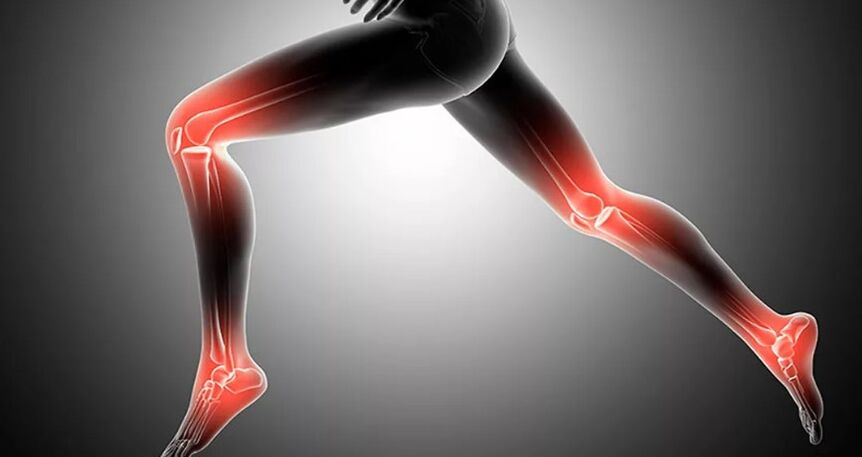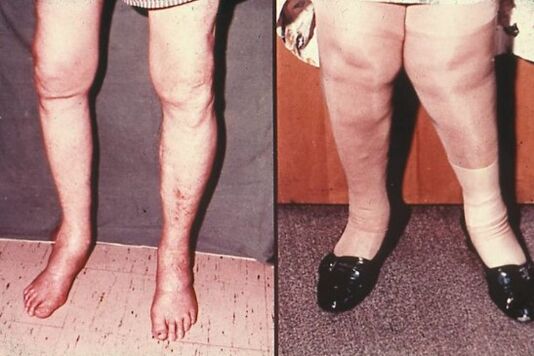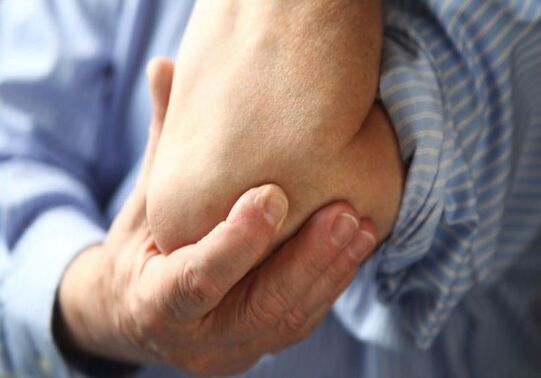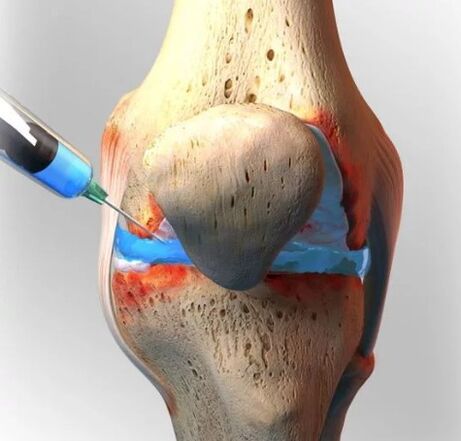All you need to know about osteoarthritis - its causes, signs, varieties and diagnostic methods - will help to detect the disorder in the early stages. And effective treatment methods will allow you to get rid of this disease. Arthosis is characteristic of people over the age of 40. However, impartial statistics have showed in recent decades a tendency to rejuvenate men and women aged between 30 and 35 have started to suffer.

What is arthrosis?
Arthosis is a chronic joint disease accompanied by pathological changes in the cartilage IALINA and subsequently in adjacent tissues, a joint capsule and a synovial shell. The defeat is dystrophic and degenerative of nature, which leads to a change in the structure of the joint tissues, the loss of their functionality. In accordance with the data of the same statistics, arthrosis is subject to 12% of the total population of the planet. From 62% to 65% of all episodes of the disease falls over people over the age of 60. Another 30-35% of cases of joint damage to this pathology is in patients aged 40 and 60. And about 3% are young people aged between 20 and 40.
The danger of joint disease manifests itself by the fact that it is practically not completely healed. Although when diagnosing the pathology in the initial phase of the progression, it helps to preserve the functionality of the joint.
Very often, cases of harmless injury in these joints are diagnosed:
- Carpal junti;
- Cervical and lumbar column;
- knee;
- hip joint;
- shoulder articulation;
- ankle;
- Metatarse joint -falangea.
The disease is more characteristic of the female population: representatives of the half -female of the population suffer from this pathology more often in old age. The arthrosis of the interfalancia joint occurs in women 10 times more often than in the male population.

The probable consequences of arthrosis
With timely treatment, the disease manifests itself with less evolutionary intensity and, consequently, an arrest of degenerative and dystrophic changes. This means that timely surgery or therapeutic intervention allows to maintain the functionality of the joint, normal and eliminating pain.
At the same time, the tightening with the treatment leads to frequent and stable pain, lame, swelling of the joint. Progressive pathological changes in tissues deprive the articulation of its normal functionality. In a short time, in the absence of a competent treatment, arthrosis flows rapidly in a chronic form. These consequences give rise to the need for constant medical observation and regular treatment of the disease during periods of exacerbation.
In order to avoid the consequences and complications with the first suspicions of its development, it is necessary to contact medical specialists. In the early stages of progression of the arthrosis of the joints, a rheumatologist is engaged in the treatment. In chronic form, the treatment of this pathology is carried out by an orthopedic traumatologist.
Types of arthrosis
This pathology of the joints has different forms and varieties that differ in these criteria:
- causes (primary and secondary form);
- The phases of osteoarthritis (three phases of progression are classified);
- Location of the pathology (place of manifestation of the disease and type of articulation);
- Form of location (generalized and local form);
- The course of the disease (acute or chronic).
In the place of manifestation of symptoms, hip, knee, cystic, elbow, shoulder, ankle, cervical arthrosis are distinguished.
According to the etiological signs, the pathologies of primary nature are classified, developed in themselves without prerequisites and a secondary disease. In the latter case, damage to the joint occurs due to the development of infectious diseases in adjacent tissues, mechanical disorders, loss of physiological functionality of the articulation, as well as due to a progressive inflammatory process, hypothermia, injuries or other factors.

The classification in the form of localization involves local and generalized damage to the joints. In the first case, the disease and its symptoms cover a small part of the joint or its individual tissues and components. With a generalized form, different joints or one of them are affected with full coverage of all joint tissues.
In the different stages of the progression of the disease, a variable degree of intensity is manifested. At the same time, symptoms and complications can be expressed brighter, which lose more or less dynamically the process of destruction of the tissue and compromised joint functionality.
Depending on the course of arthrosis, they distinguish:
- acute form;
- chronic form.
The acute form usually manifests itself for a greater intensity of the development of symptoms and their gravity. The painful sensations appear more strongly and the morphological changes in tissues proceed more dynamically. In a chronic form, the course of the disease is slowly manifests itself from separate signs during the periods of exacerbation and is practically not subject to cure.
Degree of illness
During the disease, medicine distinguishes three phases that have differences on the signs of the disease, on the intensity of the damage and the location. At the same time, distinguishing in all three phases refer to the types of tissues that undergo pathological changes.
- The first degree of development of the arthrosis of the joints is the initial phase of the disease. It is characterized by a slight injury of the cartilage tissue and the loss of physiological functions in the collagen fibers. At the same time, in the first phase, small morphological disorders of the bone tissue and structural changes are detected in the synovial fluid. The cartilage of the joint is covered by cracks, the patient has a slight pain at the place of location of the pathology.
- The second degree is the development of arthrosis with an increase in dynamics. This phase is characterized by the appearance of stable pain, Chroma. Remarkable morphological cartridges and cartilages of the cartilage are detected, during the diagnosis, bone growth are revealed. Osteophytes are formed: bone growth that are visible during a visual examination of the destruction site. At the same time, the processes of degenerative changes in the synovial capsule occur, which leads to its structural exhaustion. The disease at this stage can often worsen and be regular. The pain gradually becomes constant.
- The third degree is active progression. At this stage, the synovial fluid is almost completely absent due to its degeneration and the brusque bone tissues on each other. Articular mobility is almost completely absent, pain becomes more tangible. The cartilage fabric is also absent due to degenerative and atrophic changes. The treatment of the third degree of arthrosis of the joints is considered not very practical.

In addition to these three degrees of pathology development, there is a final stage: the irrevocable destruction of all joint tissues. At this stage, it is impossible not only to conduct production therapy, but also remove pain syndrome.
The inflammatory process usually begins with a second degree of damage, in rare cases, in the absence of medical interventions - at the first stage. Subsequently, it becomes more difficult to stop it, and this can lead to secondary pathologies, the development of pathogenic microflora to the place of location of the disease.
To exclude serious consequences, the treatment should start from the first degree and the use of intensive care methods. In the last stage associated with the complete destruction of the cartilage tissue, only one methodology is allowed to guide the patient from the pain and the immobility of the joint: endopropostetic with complete or partial replacement of the components of the joint.
Causes of the disease
The reasons can be primary and secondary factors. In the elderly, the disease can occur with mixed etiology, that is, in the presence of primary and secondary causes. Their complex event aggravates the course of arthrosis and reduces the dynamics of recovery.
The main cause of most of the types of this pathology is a violation of the metabolism. The metabolic processes changed lead to morphological anomalies in cartilage and synovial liquid. As a result of this, the changes refer to the entire articulation and are often accompanied by the origin of the local outbreaks.
In addition to the metabolic pathologies, the causes of arthrosis of the joints are:
- Traumatic damage to the individual fabrics or the entire joint. This includes dislocations, fractures, ligaments, meniscus breakage, penetrating wounds. This reason is more common in the people involved in sport or whose activities are linked to dangerous working conditions and physical effort;
- An inflammatory process is a factor often acts as a secondary reason. Inflammation usually develops in patients suffering from gout, psoriasis, rheumatic anomalies, autoimmune diseases. The joint joints are subject to patients in the exacerbation of infectious diseases, including tuberculosis, chlamydia, staphylococcus and other contagious diseases;
- The consequences of the aggravated form of respiratory diseases: acute respiratory viral infections, acute respiratory infections;
- Increase in the patient's body weight - with disproportionate load on the joints of their tissues, it undergoes constant mechanical effects, which leads to morphological deviations and the destruction of the structure of the cartilage;
- excessive hypothermia that leads to the destruction of the integrity of the cartilage tissue and the loss of the structure of the synovial fluid;
- thyroid diseases.

A separate place in the etiology of arthrosis is a genetic factor. It is the genetic anomaly that is able to cause dysplasia of the joint tissues and the disorder of the physiological functions of the collagen fibers, responsible for flexibility and mobility of the joint.
At the same time, other concomitant factors are the reasons for the development of this pathology: vitamin deficiency, intoxication due to aspirational quality products or excessive overdose of drugs, the patient's advanced age, pathological processes of blood formation and blood flow, hormonal anomalies and hormonal anomalies, hormonal anomalies and hormonal anomalies, hormonal anomalies. hormonal anomalies, hormonal anomalies, hormonal anomalies, hormonal anomalies and hormonal anomalies.
The disease progression mechanism
When any of the causes that cause the disease of arthrosis, the pathological processes begin to develop in it appears. The mechanism of their progression is not completely studied, but the main phases of official medicine are known.
In the initial phase, the structure of the cartilage tissue and the abnormal changes of the synovial fluid occur. All this proceeds due to the violations of the metabolic processes in which the joint tissues do not receive the necessary components in sufficient quantities or are deprived of some of them.
Subsequently, the elasticity of the collagen fibers and the flexibility of the cartilage are lost, due to the fact that in the body, with a lack of nutrients, hyaluronic acid does not have the time to produce, which provides the softness and flexibility of the structural composition of the collagen fiber. The cartilage gradually dries, becomes fragile and cracks. The liquid in the synovial capsule is gradually depleted and then disappears completely.
Rugity, solid bone neoplasms are formed on the cartilage tissue. At the same time, the deformation of other joint tissues develops, their pathological degeneration, dystrophy and loss of physiological activity.
For the patient, these changes mean the appearance of pain, lame and immobility of the joint.
Symptoms of arthrosis
The signs of arthrosis of the joints appear from its first degree, although sometimes they are not so pronounced. The characteristic phenomena for all stages of osteoarthritis are:

- pain syndrome;
- crunchy sounds when it moves;
- inactivity or complete reduction of joint mobility;
- swelling;
- Conformation of the joint.
Pain
Pain usually occurs during movement. With intense physical effort, painful sensations intensify and acquire a persistent trend. With all types of arthrosis, any place of their location, the pain is acute.
In the initial phase, the pain is weakly expressed, more often they appear during the day. Usually the pain is short and attends itself to rest. In chronic form and with intense progression of the acute form of pain, pain syndrome manifests itself more often, has an increase in the period of manifestation, often also worries about rest at night.

















































